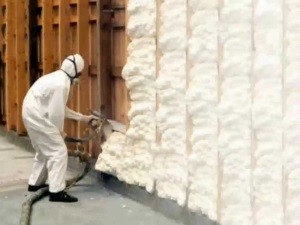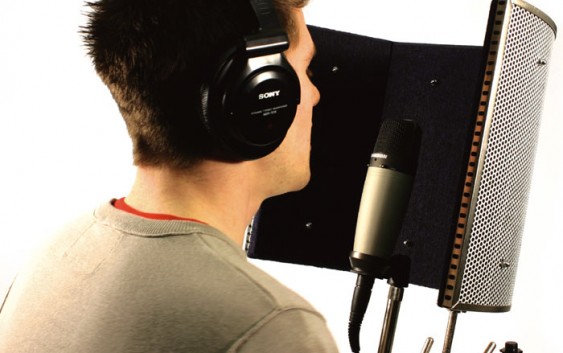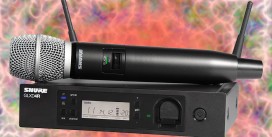A lot of people buy expensive microphones for recording just to find out that they still sound awkward. The reason why this happens often has nothing to do with the mic, although a wrongly chosen model can be another significant factor. The main reason you don’t sound all right is the so-called bad acoustics. Basically, acoustics is a number of factors that determines the propagation of sound in one or another environment. This can mean many things but for the room or studio recording, it mainly comes down to reflection and absorption, and this is what we shall discuss in this article.
Reflection
Although any solid object can possibly reflect the sound, the degree of reflection as well as frequency specter of reflected waves may vary. Usually if an object is large enough, it can reflect any frequencies and if an object is small only higher frequencies will be reflected. Hence, room walls can reflect the sound pretty evenly while any other things in the interior will likely add some coloration to the sound. You may easily verify it by voicing in an empty room, then in a furnished or a cluttered room. They won’t sound the same at all.

In recording, mics are much more pickier to those sound reflections than human ears. This is why, even though you may sound great playing or singing live, when you try to record it sometimes it just doesn’t work. There are three basic kinds of reflection that can be easily distinguished by anyone. First is called echo. Echo is simply a repeated sound with a delay, the larger the distance, the bigger the delay. Second is reverberation. Reverberation is when the sound ‘stays’ in one room by keeping on reflecting back and forth. Every room has its own, unique reverberation, which can be both pleasant and unpleasant.
However, in recording you always want to keep it down to minimum, especially home and in studio. Otherwise, even if you have a fantastic voice you will still sound dull and surreal. Being able to sing or play instruments is one thing, but being able to record is another and both are equally important. And guess what, an amateur singer recorded on tape professionally will sound more acceptable than a professional singer with amateur recording. Finally, there is a third type of reflection called a standing wave. In a standing wave, the sound is being reflected in the same phase that results in increase of the sonic amplitude. Keeping down the theory, this will mean added coloration for some frequencies, and may also result in resonation with different objects, producing different rattling or ringing sounds.
Absorption
Absorption can be described as the opposite of reflection. When the sound isn’t reflected it is being absorbed. Generally, soft and porous materials do quite well for absorbing sound. This would include things like styrofoam, fiberglass, soft woods, cotton, etc. Every material provides different amount of absorption, which as well varies depending to the frequency. For instance, cotton does much better for mid to higher end frequencies while fiberglass equally works for low end. The thickness of material plays an important factor. The thicker the insulator, the better is the absorption.
You will always find some insulating materials in studios that are meant to absorb unwanted sounds. The main reason of their use is to combat the room reflections. The sounds from the environment are being filtered by the solid walls of a studio rather than damping materials inside the room. A basement without windows would provide a great isolation from the outside noise, but would still need a bit if insulation in order to achieve a decent recording. The good thing, you don’t have to insulate the whole room if you are using directional microphones.
Directionality

Supposing you already know about the polar patterns, different mics have different directionality. While a cardioid mic picks up sound directly in front of it but also from the sides, you would have to dampen both, the wall behind you and the sidewalls as well. If you record at home, it is also important to make sure no environment noises are coming anywhere from the sides, which can be a difficult task. It is also possible however to use a smaller piece of material to shield the mic itself and a singer rather than insulating the entire walls. While a cardioid mic can still work at home, you should never use an omni mic, as it would need isolation from every direction, which is hardly achievable even in studios.
A better move could be the use of more directional mics, particularly hypercardioids. In fact, in any movies where they have to record sound inside an interior, they use shotgun mics that have a narrow focus. The reason behind this is that such mics only capture the sound of what is directly in front of them. If there is any noise or reflection coming from the sides, it will not be captured. This allows for an easy setup, as all you have to do is to position it away from any noises and bare walls that can reflect the sound. Keep in mind; those mics are also sensitive to the sounds coming from behind.
If you don’t have any insulators at home, you can improvise with the things like duvets, rubberfoams, carpets and even mattress. You may want to position those materials behind yourself so that nothing else is being reflected and captured. Other tip is to record from an upward / downward angle and make sure the other end of the mic is not pointing at any source of noise. It is also preferable to keep the rear end away from walls or if possible apply some shield behind it. Although with a hypercardioid mic you will get stronger proximity effects, you will still sound better in rooms with poor acoustics.








I need to know whether using the spray foam alone for insulation make the place completely sound proof?
“Soundproof” is a myth. Acoustic energy can be absorbed or transferred, but not completely nullified using conventional treatment.
For example, using foam might help you better attenuate frequencies above 200Hz by -65dB while frequencies below 80Hz would be attenuated by -28dB. High frequencies are easy to attenuate, low frequencies are difficult to attenuate.